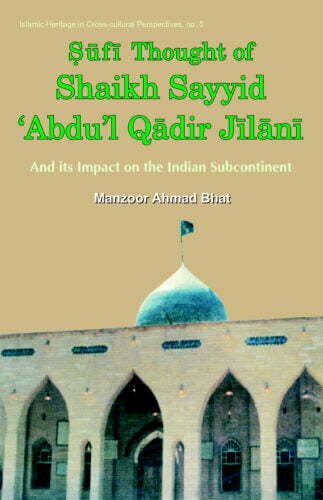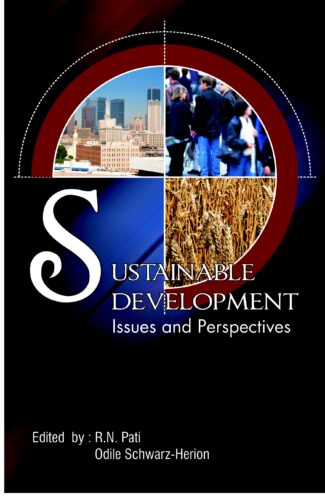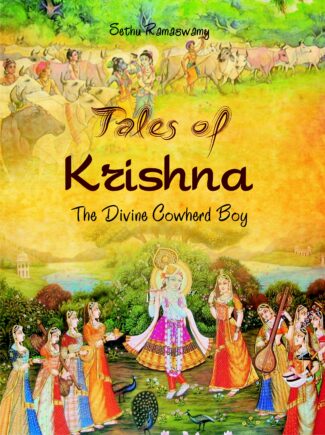Showing 871–880 of 1064 results

Success is a journey, not a destination. It comes beacuse of proper planning and its execution, having the ingredients of opportunity and talent. These 100 quotes bring forth the meaning, ways and means, and different facets of success. Each quote has a stimulating painting of Lord Ganesha, the Lord of Peace, Prosperity and Wisdom, resonating the theme.
The authors, through 100 quotes, brings forth the meaning, ways and different facets of success. Each quote has a stimulating painting of Lord Ganesha, the Lord of Peace, Prosperity and Wisdom, representing the theme. Many of these recollective quotes are from highly reputed global personalities, who enlightened this world with their lives and services, and the rest are from the pens of the authors.
Success is a highly subjective topic. It means different to different people. Climbing the ladder of success is like climbing a mountain, from one peak to another. Succcess is a journey, not a destination. It comes beacuse of proper planning and its execution, having the ingredients of opportunity and talent. Luck is not a criterion in success. Dream big, but practical, have self esteem, work hard, remove negative thoughts from the mind, learn from the past experiences, and have the willingness and readiness to change, improve and achieve. One is set to embrace success for sure!.

The book deals with the subject of Sufism with special reference to the Sufi thought of Shaikh ‘Abdu’l Qadir Jilani, and discusses the impact of his teachings in terms of the emergence of various Qadiriyya centres in the Indian subcontinent.
The volume mainly deals with the Sufi thought of one of the most revered and influential Sufis, Shaikh Abdul Qadir Jilani (eleventh-twelfth century), particularly its impact on the culture and tradition of the Indian subcontinent. It presents a historical perspective on the religious-political theorists of the time and pattern of administration then. In an interesting study, it deals with the life and works of the saint and emergence of Sufi thought and organization of Sufi silsilas. The focus is on the original utterances, sermons and discourses of the scholar-preacher and interpretation of the most recurring themes in Jilanis vocabulary in a simple manner. The themes relate to unity of the Divine Being, enforcement of the lawful, love of humanity, polytheism, the spiritual struggle in man and different ahwal (states) and maqamat (stations) of the Sufi thought. It observes that Jilani has not deviated from the fundamental teachings of the Quran and the Sunnah. It discusses the impact of his teachings in terms of the emergence of various Qadiriyya centres in the subcontinent and flourishing of his thought after his time.
The volume will be useful to scholars of Islamic studies and general readers interested in understanding the evolution of Islamic thought in the Indian subcontinent.

Taken from Ramcharitmaanas, this small book contains rules for doing Sundar Kaand Puja and includes Hanumaan Chaalisaa, Sankatmochan Hanumaanashtak, Bajrang Baan, Sri Ram Stuti and Hanuman and Ramayana aaratis.
Taken from Ramcharitmaanas, this small book contains rules for doing Sundar Kaand Puja and includes Hanumaan Chaalisaa, Sankatmochan Hanumaanashtak, Bajrang Baan, Sri Ram Stuti and Hanuman and Ramayana aaratis.

The book makes a fascinating study of the unique philosophical tradition revolving around the concept of the Sunya Purusa the ineffable, indescribable and non-dual Reality that originated in medieval Orissa. Examining a range of philosophies, it throws light on the theories of this rare school of Vaisnavism that was Vaisnavite in form but Buddhistic in essence.
This pioneering study of the indigenous philosophical tradition of Orissa which evolved between the 15th 16th century ce brings into limelight the wonderful syncretism of Buddhism and Vaishnavism, traditions that are generally considered philosophically antithetical. A deep metaphysical quest underlies the enquiries and analyses of this assimilative tradition and is epitomized in the works of the philosopher-poets of Orissa in the concept of the Shunya Purusha the ineffable, indescribable and non-dual reality. This is a unique concept that encompasses within its fold the idea of Jagannatha (the Vaishnavite deity of Puri) as Shunya. The author explores the whole range of Indian philosophical heritage including Vaishnavism, Buddhism, Advaita Vedanta, Yoga, and Natha tradition to bring out the highpoints of this rare philosophical tradition. She, very competently, throws light on the philosophical theories/concepts of Bauddha Vaishnavism Vaishnavic in form but Buddhist in spirit. The book is a valuable guide on this distinctive Orissan Vaishnava tradition to all students and scholars of Indian religion and philosophy.

The work offers an in-depth study of the sautramani Vedic sacrifice in its caraka and kaukili forms. It shows how the brahmanas compare it with a soma sacrifice, and how sautramani itself has evolved over time.
Associated with wrath, gambling and, at the symbolic level, with darkness and misery, sura has been strongly condemned in Vedic literature. Yet, paradoxically, it has not just found its way into a Vedic sacrifice itself: called sautramani, but has even been sanctified in the rajasuya and punarabhisheka rituals as well. However, it is sautramanis sacrificial fire alone to take in liquor as an oblation material. Dr. Madhavi Kolhatkar here offers an indepth study of this sura-related Vedic ritual: of both its caraka and kaukili forms, together with all their attendant details. The book explores the possible origin and nature of sautramani sacrifice, addressing itself to a range of the hitherto-unanswered questions, for instance; How did sura come to have its acceptance in a shrauta ritual (like sautramani), despite its outright disapproval in the Vedic texts? Why is the sautramani performed after rajasuya? Is there any linkage between sautramani and punarabhisheka which both happen to involve the sura-ritual? How is, then, sautramani related to the agnicayana? And, what is the underlying importance of the myths that tell about the primeval performance of the sautramani? In spelling out the social, medicinal and ritualistic significance of sautramani, the author also shows how the Brahmanas often compare it with a soma sacrifice, and how sautramani itself has evolved over the time. In the context of this Vedic ritual, she also highlights the hierarchic contentions between the brahmanas and the kshatriyas in the ancient Indian society. It is a piece of valuable research for Indologists, especially the scholars of Sanskrit, Vedic studies and ancient Indian history and culture.

The Surya Siddhanta is one of the earliest astronomical texts of the ancient India. Under the tradition of Upanishads, the Surya Siddhanta reveals the knowledge of the planetary motion of the solar system directly given by the Sun god to Mayasura, subsequently passed down in oral form. Later on Varahamihira (ce 505-87) discussed the doctrine of Surya Siddhanta in his book on Pancasiddhantika. The present Hindi translation of the Sanskrit verses of Surya Siddhanta is based on the famous English translations by Reverend Ebenezer Burgess (1860) and Pt. Bapu Deva Sastry (1861).
Significant coverage in the fourteen chapters of the book is on units of time, length of the year of gods and demons, day and night of Brahma, the elapsed period since creation, planetary eastwards movement and sidereal revolution. The lengths of the earths diameter, circumference are also given. Eclipses and colour of the moons eclipsed portion are mentioned. The appendices provide the modern aspect on these topics. The researchers of ancient astronomy and others may find it an interesting reading.
The Surya Siddhanta is one of the earliest astronomical texts of the ancient India. Under the tradition of Upanishads, the Surya Siddhanta reveals the knowledge of the planetary motion of the solar system directly given by the Sun god to Mayasura, subsequently passed down in oral form. Later on Varahamihira (ce 505-87) discussed the doctrine of Surya Siddhanta in his book on Pancasiddhantika. The present Hindi translation of the Sanskrit verses of Surya Siddhanta is based on the famous English translations by Reverend Ebenezer Burgess (1860) and Pt. Bapu Deva Sastry (1861).
Significant coverage in the fourteen chapters of the book is on units of time, length of the year of gods and demons, day and night of Brahma, the elapsed period since creation, planetary eastwards movement and sidereal revolution. The lengths of the earths diameter, circumference are also given. Eclipses and colour of the moons eclipsed portion are mentioned. The appendices provide the modern aspect on these topics. The researchers of ancient astronomy and others may find it an interesting reading.

It is realised that the synergy between local knowledge and development efforts would ensure the achievement of Millennium Development Goals. This book is an outcome of explorative research conducted on the issues of Sustainable Development by scientists of various research institutes and universities of India and abroad.
Sustainable Development is a major thrust area adopted for all development interventions initiated by different National Governments of the world as a follow up initiatives to resolutions of Millennium Development Goals (MDGs). The First Global Knowledge Conference at Toronto (1997) encouraged world leaders, policy makers, scientists and civil society representatives of developing countries to focus more on community-based knowledge systems and development practices and incorporate them in ongoing development initiatives for achievement of Sustainable Development. It is realised that the synergy between local knowledge and development efforts would ensure the achievement of MDGs. The forces of globalisation have affected the indigenous communities and their empowerment process in different parts of the globe. In 1998, World Bank for the first time launched the indigenous knowledge for development programme to explore local knowledge systems and development practices and integrate the best practices into the framework of Sustainable Development. Linking indigenous knowledge with Sustainable Development has been experimented across different regions of the globe. This book is an outcome of explorative research conducted on the issues of Sustainable Development by scientists of various research institutes and universities of India, Malaysia, Portugal, Switzerland, U.S.A. and Romania. It is recognized that the economic benefits and incentives associated with indigenous practices would ensure preservation of local knowledge and achievement of Sustainable Development.

This biography is a vivid account of Syed Abdul Hasan Ali Nadwis (1913-99) multifaceted personality and his influence among Muslims across the globe. It thus portraits his vision, mission, organizational ability, determination to face challenges, devotion in introducing the essence of Islam to the new generation Muslims.
Syed Abdul Hasan Ali Nadwi (1913-99), an eminent Islamic scholar, thinker, educationist, and reformer of the twentieth century, stood tall across the entire Islamic and Arab world with his sheer faith in Islam, works, reforms, courage, and love for mankind. A gifted speaker and a prolific writer, he wrote more than 50 books and hundreds of papers on history, literature, and theology in both Arabic and Urdu. Syed Nadwi’s literary efficiency was par excellence, having envious profundity in Arabic and Urdu. His Ma Dha Khasarul ‘Alam ba Inhetatul Muslimeen is considered as one of the best books of the twentieth-century Arabic literature.
This biography by his close associate and nephew is a vivid account of Syed Nadwi’s multifaceted personality and his influence among Muslims across the globe, Arab and non-Arabs alike. He was well known for his wisdom, intelligence, foresight, and rapport with numerous intellectuals, religious and political heads in the Muslim world and elsewhere. As an exemplary personalty, he stood firm against the 1975-76 birth-control policy of the Indian government and played a pivotal role in getting the Muslim Personal Law passed in 1985.
This volume portraits Syed Nadwis vision, mission, organizational ability, determination to face challenges, devotion in introducing the essence of Islam to the new generation Muslims. It should entice all new generation students of Islamic history and literature across nations to reform themselves and be a catalyst in Islamic ethics, manners, and vision of a modern Islamic world.

The Taittiriya Upanisad is offered in three chapters treated singly by the author who reveals the invisible thread that runs through them. The analytical commentary results from the insights he has gained from interactions over the years.
The Upanishads capture the quintessence of Indian spiritual wisdom unfolding deep-set, highly perceptive reflections on human existence and how it is related to cosmic mystery. Authored by enlightened seers, at different times, during 1500-200 b.c., the Upanishadic message inheres neither a promise of heaven, nor scare of hell. Rather, it is a magnificent vision that raises human consciousness to sublime heights. The Taittiriya appended to the Krishna (Black) Yajur Veda is one of best among the principal Upanishads. And, schematically, is offered in three chapters, entitled: (1) Shiksha Valli, (2) Brahmananda Valli, and (3) Bhrigu Valli which each Swami Muni Narayana Prasad treats singly, superbly revealing the invisible thread that goes through all of them. With origjnal Sanskrit text, its Roman transliteration and easy-to- understand English paraphrase, this stimulating, at once analytical commentary grows from Swami Muni Narayana Prasads prolonged reflections on the Taittiriya Upanishad, coupled with the insights he acknowledges to have gained from Nataraja Gurus discourses on different Upanishadic themes, Narayana Gurus mystico-philosophical poems, and numerous sessions of intellectual interaction with different groups of scholars.

The book presents the stories on Krishna relating to events before and after his birth, his life as cowherd in Gokul, Vrindavan and Mathura and Kansa’s atrocities, his leelas with gopis in Vrindavan, his brave deeds, his visit to Mathura and the death of Kansa.
The book presents the stories on Krishna as contained in the Bhagavata Puranam which was narrated by Sage Shuka to King Parikshit according to legend. The tales relate to events before the birth of Krishna and Krishna’s life as a boy in Gokul, Vrindavan and Mathura. They relate to a number of events and acts relating to the life of Krishna such as Kansa’s atrocities on the people, the plight of Krishna’s parents, Devaki and Vasudeva, the birth of Krishna, his childhood pranks and leelas with gopis in Vrindavan, his brave deeds, his visit to Mathura and the death of Kansa at the hands of Krishna. Written for modern young readers, in a simple and easy-to-understand language, the stories contain the rich religious tradition of India that has come down through the centuries and continue to be revered today.